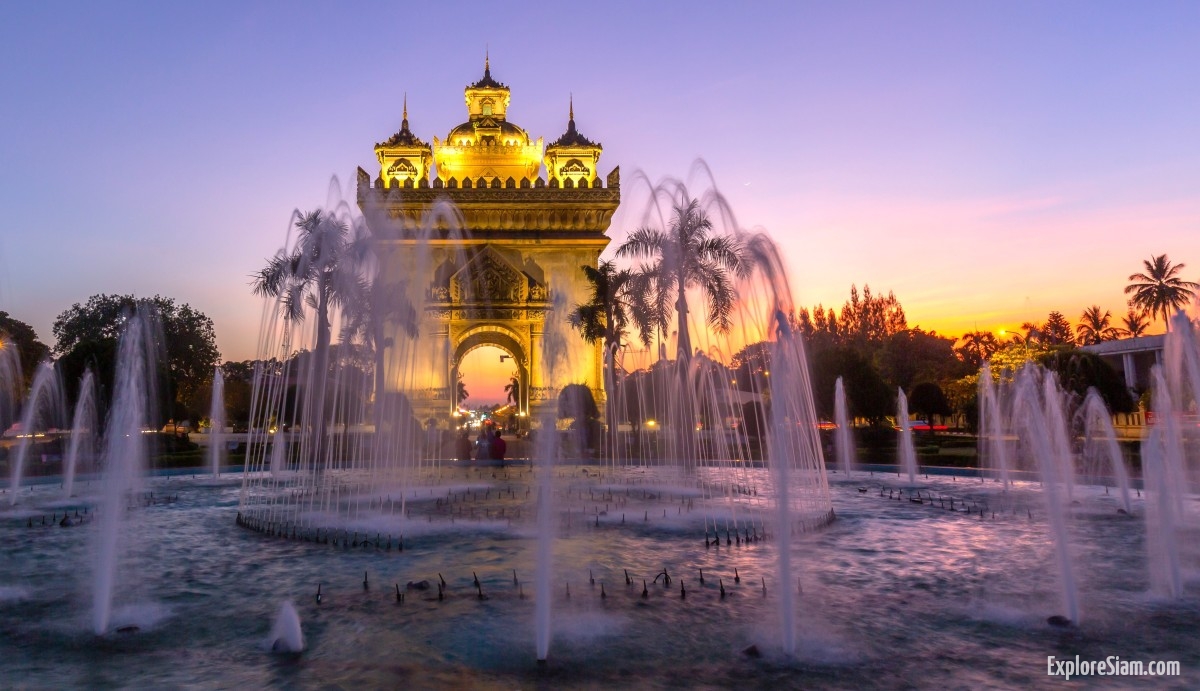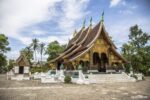Vientiane, the capital of Laos, sits quietly along the serene banks of the Mekong River. Unlike many bustling capitals in Southeast Asia, Vientiane is a city where time seems to slow down. It’s a place where the past and present exist harmoniously, offering travelers an experience that combines rich cultural heritage, spiritual landmarks, and a slow-paced lifestyle that invites relaxation and reflection.
A City Rooted in History
Vientiane’s history stretches back centuries, with its origins believed to trace to the 9th century as a Khmer settlement. However, the city rose to prominence during the reign of King Setthathirath in the 16th century when it became the capital of the Kingdom of Lan Xang. This royal legacy can still be felt today through the magnificent temples and palaces that dot the cityscape.
One of the most iconic symbols of Vientiane is Pha That Luang, a golden stupa that has stood as the symbol of Laos since its construction in the 16th century. It represents both the spiritual and political heart of the nation, drawing pilgrims and visitors alike to marvel at its grand architecture and peaceful surroundings. Like many of the city’s monuments, Pha That Luang has been rebuilt several times, having suffered destruction during invasions and wars, yet its significance endures.
The French colonial period also left an indelible mark on Vientiane, transforming the city into a blend of European and Lao influences. As you walk through the streets, you can still see colonial villas, shaded by tropical trees, next to traditional Lao wooden houses. This mix of architectural styles gives Vientiane a unique charm that reflects its complex history.
Temples and Spiritual Sanctuaries
Vientiane is a spiritual hub for Laos, with countless temples and shrines scattered throughout the city. Each temple, or “wat”, has its own story to tell, contributing to the city’s peaceful atmosphere and offering visitors a glimpse into the deep-rooted Buddhist traditions of the country.
One of the most significant is Wat Sisaket, the oldest temple in Vientiane. Built in 1818, it is known for its collection of over 2,000 Buddha statues, displayed in small niches along the walls. Despite suffering damage during the Siamese invasion of 1828, Wat Sisaket survived intact and stands as a testament to the resilience of Lao culture and religion. The temple’s interior is serene, with its vibrant murals depicting scenes from the life of the Buddha and the careful maintenance of the grounds providing a space for quiet contemplation.
Wat Ho Phra Keo, another prominent temple, was once the royal temple of the Lao monarchy and formerly housed the revered Emerald Buddha. Although the statue was taken to Bangkok in the 18th century, the temple remains a powerful symbol of Laos’ religious and cultural heritage. Today, Wat Ho Phra Keo serves as a museum, showcasing religious artifacts, ancient scriptures, and delicate carvings, all of which provide insight into the rich history of Buddhism in Laos.
These temples, along with many others, are not merely tourist attractions but active places of worship. Monks in saffron robes can be seen walking the streets in the early morning, collecting alms from local residents, continuing a tradition that has been practiced for generations. For visitors, the chance to witness or even participate in these ceremonies is a humbling experience, adding depth to their understanding of Lao spirituality.
The Rhythm of Life Along the Mekong
The Mekong River is the lifeblood of Vientiane. Its presence defines the city’s geography, culture, and daily rhythm. Life here revolves around the river, with the early morning fog lifting slowly over the water, and the sun setting in a golden glow across the horizon.
One of the best ways to experience Vientiane is by walking or cycling along the riverbank, particularly at sunset. The promenade along the Mekong is a popular spot for both locals and tourists, where street vendors sell everything from grilled meats to fresh tropical fruits. The calm flow of the river is reflected in the pace of life here, with children playing along the water’s edge, and families gathering for a leisurely evening stroll.
Vientiane’s connection to the Mekong is not just visual. The river serves as a vital trade route and source of sustenance for the city. Fishermen can still be seen casting their nets in the early morning light, and the riverbanks are dotted with small markets selling fresh fish, vegetables, and herbs that are integral to Lao cuisine.
Flavors of Vientiane
Laotian cuisine is an essential part of the cultural experience in Vientiane. The city’s food scene offers a blend of traditional Lao dishes, French-inspired fare, and regional Southeast Asian flavors, making it a culinary adventure for any traveler.
A visit to Vientiane would be incomplete without trying laap, the national dish of Laos. This minced meat salad, seasoned with fresh herbs, lime juice, and fish sauce, is often served with sticky rice and is a staple in local households and restaurants alike. The flavors are bold, fresh, and uniquely Lao.
Another must-try is tam mak hoong, the Lao version of the famous green papaya salad. Unlike its Thai counterpart, the Lao version is more intensely flavored, with fermented fish sauce and extra chili, creating a dish that is both spicy and tangy. For those seeking a more familiar taste, the city’s French influence is evident in the availability of freshly baked baguettes, pâtés, and pastries, especially at the local markets.
Vientiane’s food markets are a feast for the senses. The bustling Morning Market (Talat Sao) and the Night Market along the Mekong River are perfect places to sample street food and buy local products. From sticky rice to spicy sausages and grilled fish, these markets offer an authentic taste of Vientiane’s culinary heritage.
The Legacy of Colonial Vientiane
As a former French colony, Vientiane still retains traces of its colonial past, most notably in its architecture, city planning, and cafes. The wide boulevards, shaded by trees, and colonial-era buildings give parts of the city a distinctly European feel. The Patuxai Monument, often referred to as the “Arc de Triomphe of Vientiane”, is one of the city’s most striking landmarks. Built to honor those who fought for independence from France, this towering structure is a reminder of the country’s turbulent history. From the top of the monument, visitors are treated to panoramic views of the city, offering a perspective on how Vientiane has evolved over time.
While colonial influence can be seen in the buildings, it is also present in the café culture. Small, charming cafes offering freshly brewed Lao coffee and French pastries are scattered throughout the city. These cafes are perfect for taking a break from sightseeing and watching the world go by at a leisurely pace. Lao coffee, known for its strong and bold flavor, is a local specialty, often served with sweetened condensed milk that balances its bitterness.
A Gateway to Laos and Beyond
Though Vientiane’s calm and quiet nature might lead some to think of it as a sleepy backwater, the city is, in fact, a gateway to exploring the wider wonders of Laos. From here, travelers can embark on journeys to the lush mountains of the north or the ancient ruins of the south. Vang Vieng, a town known for its dramatic karst landscapes and outdoor adventures, is just a few hours’ drive away, offering a stark contrast to Vientiane’s tranquility.
Vientiane is also strategically located along the border with Thailand, connected by the Friendship Bridge that spans the Mekong River. This proximity makes it a convenient entry or exit point for travelers exploring Southeast Asia, and many use Vientiane as a base for venturing into neighboring Thailand or further into Laos.
A City Like No Other
Vientiane may not have the frenetic energy of Bangkok or the grand monuments of Angkor Wat, but its charm lies in its understated beauty and its ability to make visitors feel at ease. It is a city where life moves at a slower pace, where culture and tradition are deeply respected, and where the Mekong River provides a constant, calming presence. For those seeking a more contemplative, peaceful travel experience, Vientiane offers a retreat from the hustle and bustle of modern life, inviting you to slow down and savor each moment along the banks of the Mekong.





